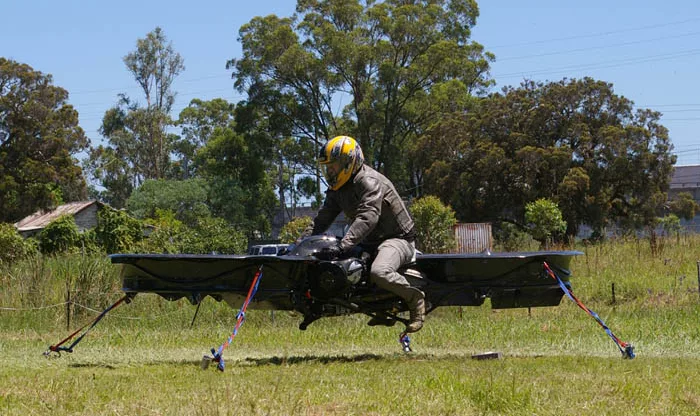Computers are essential tools for modern life. They help us communicate, work, learn, and entertain ourselves.
But they also have a dark side: they can be infected by malicious software programs called viruses.
A computer virus is a piece of code that can copy itself and infect other computers without the user’s knowledge or consent.
Some viruses are harmless pranks, but others can cause serious damage to data, hardware, or networks.
But where did computer viruses come from? Who created them and why?
And what was the first computer virus ever?
The answer to these questions lies in the secret history of the world’s first computer virus: the Creeper.
What was the Creeper?
The Creeper was a program that ran on ARPANET, the precursor to the Internet.
It was created in 1971 by Bob Thomas, a programmer at BBN Technologies, a company that worked on developing ARPANET.
The Creeper was not intended to be malicious or harmful.
It was an experiment to test how a program could move from one computer to another using ARPANET.
The Creeper would find an open connection on a remote machine, copy itself there, display the message “I’m the creeper: catch me if you can”, and then delete itself from its original location.
The Creeper was designed to be polite and respectful. It would only infect machines that were not already occupied by another user or program.
It would also check if there was enough space on the target machine before copying itself there.
The Creeper was also self-limiting. It would only run for a certain amount of time before terminating itself.
It would also avoid infecting machines that had already been visited by another instance of itself.
How did the Creeper spread?

The Creeper spread through ARPANET using a protocol called RSEXEC, which allowed remote execution of commands on other machines.
The RSEXEC protocol had no authentication or security features, so anyone could use it to access any machine on ARPANET.
The Creeper used RSEXEC to scan for available machines on ARPANET and copy itself there.
It would then run as a background process on each infected machine until it found another target or reached its time limit.
The Creeper mainly infected machines running TENEX, an operating system developed by BBN Technologies for DEC PDP-10 computers.
TENEX was widely used on ARPANET at that time by research institutions such as MIT, Stanford University, Carnegie Mellon University, and NASA.
How was the Creeper stopped?

The Creeper caused some annoyance and curiosity among ARPANET users who saw its message on their screens or noticed its presence in their systems.
However, it did not cause any serious harm or damage to any data or hardware.
Nevertheless, some people wanted to stop the Creeper from spreading.
One of them was Ray Tomlinson, another programmer at BBN Technologies who is best known for inventing email.
Tomlinson wrote a program called the Reaper, which was essentially an anti-virus program. The Reaper would search for the Creeper on ARPANET machines, and delete it if found.
It would also copy itself to other machines, just like the Creeper, but only if they were already infected by the Creeper.
In this way, the Reaper followed the trail of the Creeper, and eventually eradicated it from ARPANET.
FAQ
Q: Was the Creeper really the first computer virus ever?
A: The answer depends on how you define a computer virus.
Some people argue that the term “virus” should only apply to programs that can infect executable files (such as .exe or .com files) rather than just copying themselves over network connections (such as RSEXEC). By this definition, the first true virus would be Elk Cloner, which was created in 1982 by a 15-year-old student named Rich Skrenta.
Elk Cloner infected Apple II computers by attaching itself to floppy disks and displaying a poem on every 50th boot.
However, others argue that the term “virus” can be used more broadly to describe any program that can replicate itself and infect other computers without the user’s consent.
By this definition, the Creeper would qualify as the first computer virus ever.
Q: Who was Bob Thomas and what happened to him?
A: Bob Thomas was a programmer at BBN Technologies who worked on developing ARPANET and other network technologies.
He created the Creeper as an experiment to test how a program could move from one computer to another using ARPANET.
He did not intend to cause any harm or trouble with his program.
Thomas later left BBN Technologies and joined Cisco Systems, where he worked on developing routers and switches for Internet networks.
He retired from Cisco in 2000 and now lives in California.
Q: What was the impact of the Creeper on computer security?

A: The Creeper was one of the first programs that demonstrated the potential of network-based attacks on computers.
It showed that it was possible to create a program that could spread from one machine to another without the user’s knowledge or permission, and potentially cause damage or disruption.
The Creeper also inspired other programmers to create similar or more advanced programs that could exploit network vulnerabilities or perform malicious actions. Some examples of these programs are:
- The Worm, which was created in 1988 by Robert Morris Jr., a graduate student at Cornell University. The Worm infected thousands of UNIX machines on ARPANET by exploiting a buffer overflow vulnerability in the sendmail program. The Worm caused significant slowdowns and crashes on many systems, and resulted in Morris being convicted of computer fraud.
- The ILOVEYOU worm, which was created in 2000 by Onel de Guzman, a college student in the Philippines. The ILOVEYOU worm infected millions of Windows machines worldwide by spreading via email attachments with enticing subject lines such as “ILOVEYOU” or “Very Funny”. The ILOVEYOU worm deleted files, modified registry entries, downloaded malware, and sent copies of itself to all contacts in the user’s address book.
- The Stuxnet worm, which was created in 2010 by unknown actors (suspected to be US-Israeli intelligence agencies). The Stuxnet worm targeted industrial control systems used by Iran’s nuclear program. It infected Windows machines via USB drives or network connections, then searched for specific Siemens software used to control centrifuges for uranium enrichment. It then altered the speed and frequency of the centrifuges, causing them to malfunction or break down.
The Creeper also motivated researchers and developers to create better security measures and tools to protect computers from viruses and other threats.
Some examples of these measures and tools are:
- Antivirus software, which scans files and memory for signs of infection, removes viruses if found, and prevents new infections from occurring.
- Firewalls, which block or filter unwanted network traffic from entering or leaving a computer or network.
- Encryption, which scrambles data to make it unreadable by unauthorized parties, and requires a key to decrypt it.
- Authentication, which verifies the identity of a user or device before granting access to a computer or network.
Conclusion

The Creeper was the world’s first computer virus.
It was created in 1971 by Bob Thomas as an experiment to test how a program could move from one computer to another using ARPANET.
It was not malicious or harmful, but rather polite and respectful.
It displayed the message “I’m the creeper: catch me if you can”, and then deleted itself from its original location.
The Creeper was stopped by the Reaper, a program written by Ray Tomlinson that searched for and deleted the Creeper from ARPANET machines.
The Reaper was essentially the world’s first anti-virus program.
The Creeper had a significant impact on computer security.
It demonstrated the potential of network-based attacks on computers, and inspired other programmers to create similar or more advanced programs that could exploit network vulnerabilities or perform malicious actions.
It also motivated researchers and developers to create better security measures and tools to protect computers from viruses and other threats.
The Creeper is an important part of the history of technology.
It shows how curiosity and creativity can lead to innovation and discovery, but also how they can pose challenges and risks.
It reminds us that we need to be careful and responsible with our use of technology, and that we need to keep learning and improving our knowledge and skills in this ever-changing field.

I am a fun fact enthusiast and creator of Facts On Tap.
I love to share my knowledge and curiosity with readers and inspire them to learn something new every day.
When I’m not writing, I enjoy traveling, reading, and playing trivia games with my friends.



